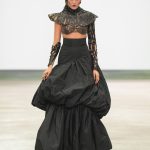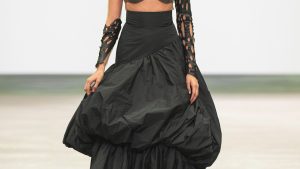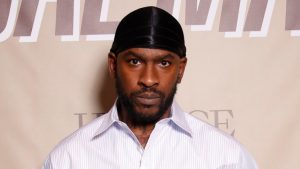
Francisco Cancino Mexico Spring 2026
In just over six years, Francisco Cancino has established his brand as a pillar of contemporary Mexican fashion. This is partly due to the decade-long trajectory he built as creative director at Yakampot before striking out with his own label, but it’s also the result of consistency and the discipline it takes to present collections according to the traditional seasonal calendar in a country where the fashion industry is still evolving.
Over the past two years, in fact, Cancino has begun to formulate his own system, creating his collections in tetralogies. This structure has allowed him to develop an extended body of work at a more deliberate pace that fits within our modern, accelerated lifestyle. After exploring the history of Mexico City with his last collections, he began a new chapter with “Cómo Criar Monstruos Marinos” (“How to Raise Sea Monsters”), which will continue to unfold over the next three seasons.
With this new phase Cancino is applying philosophical ideas to his creative process. His sea creatures are a Nietzschean metaphor, a way to “begin an exploration that started with the treatment of materials, silhouettes, and patterns.” The phrase “hacerse a la mar” (“to set out to sea”), which was also borrowed from Nietzsche, became a reminder and motivation to seek new horizons and venture into the unknown.
These concepts were evident in the way he combined his signature silhouettes with more daring details, revealing an eagerness for experimentation. Cohesion appeared in the pleated, cropped sleeves, and was echoed in sophisticated, fan-shaped high collars, as well as in the cascading crystal fringes in garments crafted from silk, wool, and cotton with lustrous satin finishes. Surprises came in the form of the sheer dresses that closed the show. “I always try to express Mexican identity,” Cancino said, “and in this collection, I asked myself what would happen if I left it bare—or incomplete.”
Backstage, the designer spoke of his desire to explore ideas from a place of freedom, which will grow into something larger over his next three collections. “I also wanted to create paradoxes,” he said, “to build a design language that moves between transparency and solidity, rigidity and languor, baroque and elaborate, minimal and effortless.” He also invoked Nietzsche’s idea of amor fati, to “think of mistakes as possibilities for creating something new.”










